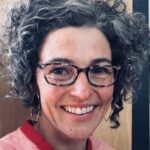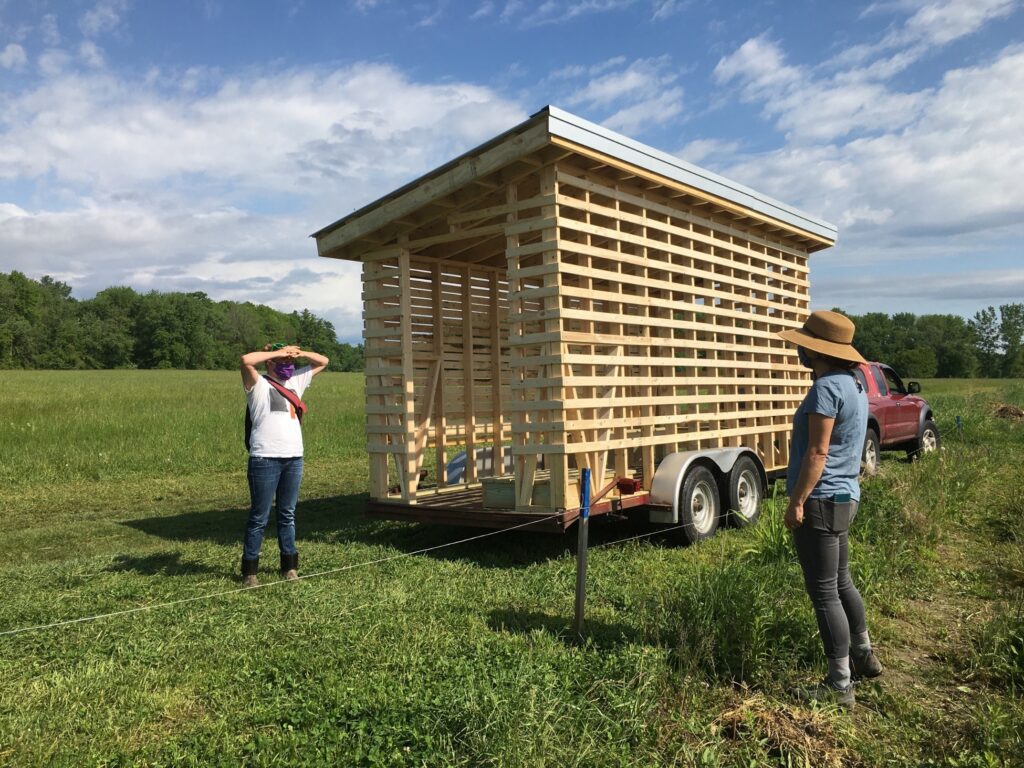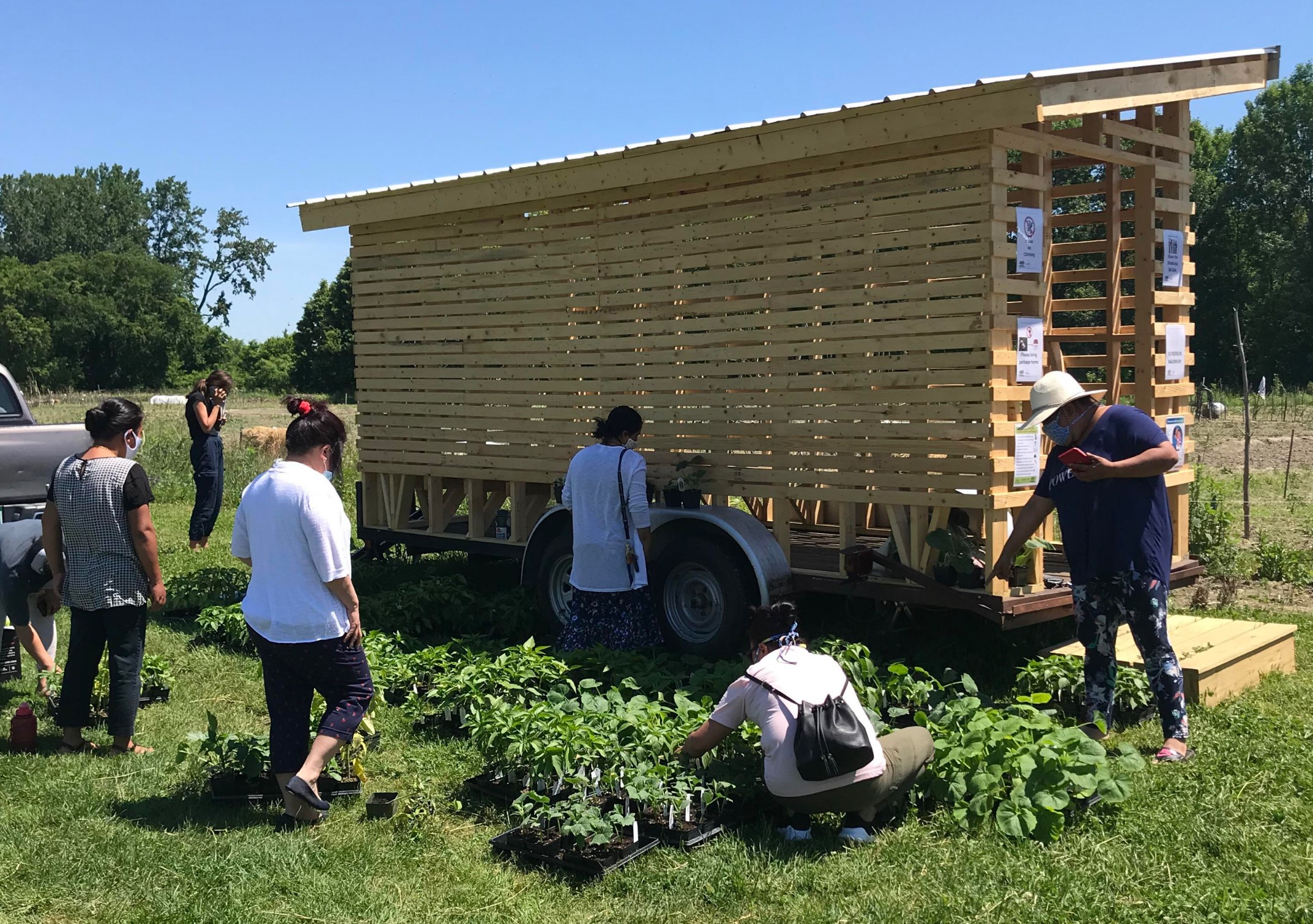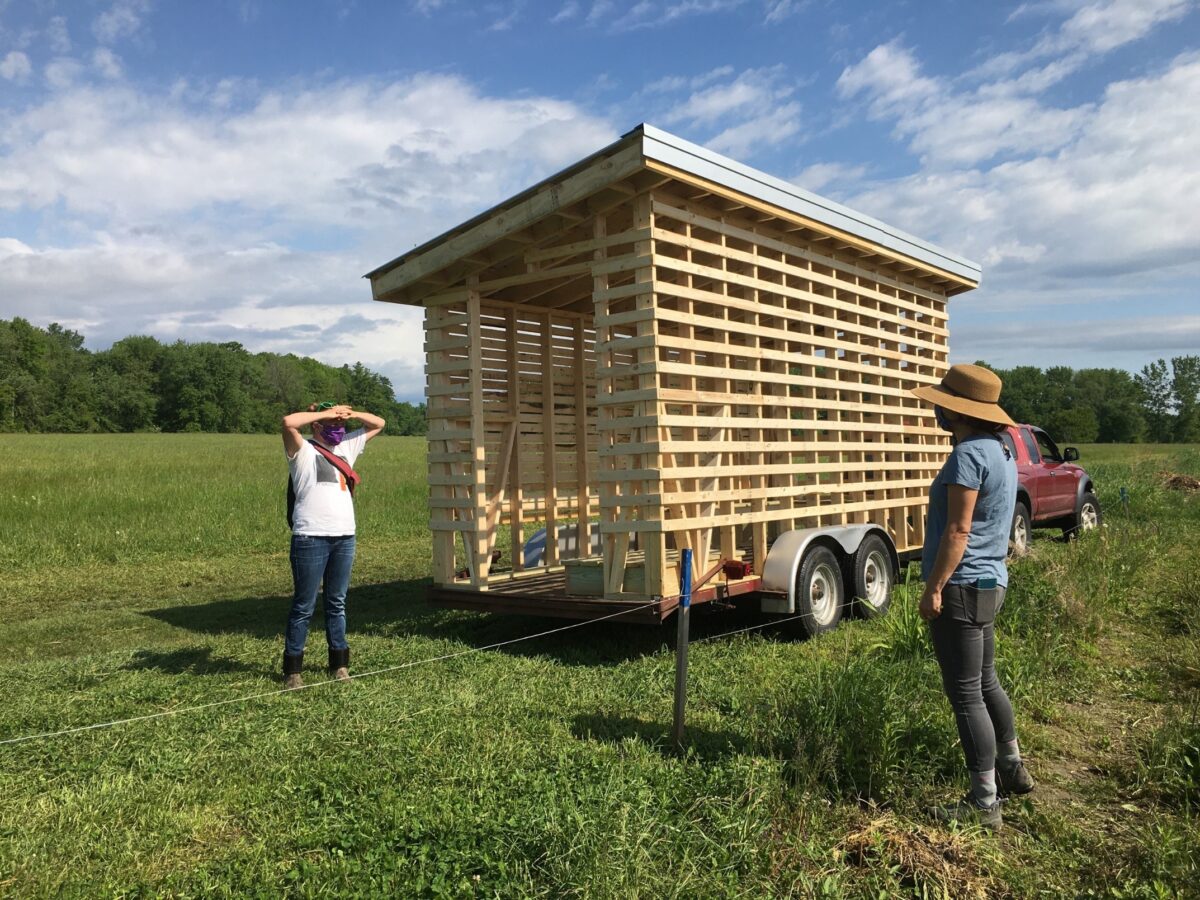Designing functional PAR processes: the perspective from NFNA
 By Martha Caswell, ALC Co-Director
By Martha Caswell, ALC Co-Director
One of the most important components of participatory action research (PAR) is the Action. Where it falls in the cycle varies: sometimes the action can emerge as a result after careful analysis of the data; or it can be a catalyst earlier in the process, centering the value proposition that both the researchers and community members should be receiving real benefit from the effort.
On a sunny Thursday morning in June, at the New Farms for New Americans (NFNA) farm near the Ethan Allen Homestead, Action rolled in. There it was, hitched to the back of a red pickup. To most eyes, it looked like a simple structure. A shed maybe? Or, as one farmer remarked walking by, “a break room?” But, as with most things, there is more to this structure than meets the eye.

For the past three years, Alisha Laramee, program specialist for NFNA, has been participating in the Urban and Peri-Urban Agroecology initiative with UVM’s Agroecology and Livelihoods Collaborative (ALC). We are currently in the second year of a USDA Hatch grant to explore the expression of agroecological principles in urban and peri-urban spaces in Burlington. Our partners include NFNA, the Vermont Community Garden Network, UVM’s Catamount Farm, and the Intervale Center. Alisha has been cautiously interested in this project but is also judicious with her time and energy. She gives all she has to the farm and farmers. When we have been able to fit into that equation, it’s been great. But Alisha has been a strong advocate for her priorities, and there isn’t a lot of room for theoretical conversations about whether or not what’s happening on the farm counts as agroecology.
For those of you who aren’t familiar with it, New Farms for New Americans (NFNA) is an agriculture program for refugees and immigrants based in Burlington, VT. NFNA supports farmers and gardeners to grow culturally significant crops, increase access to food, land, and agricultural resources, and learn about growing food in Vermont. They facilitate ongoing work with over 275 refugee clients from various countries in Africa and Asia. NFNA has sites in multiple locations, including the Ethan Allen Homestead (2.5 miles from downtown Burlington) and the Intervale (among others), representing mostly peri-urban contexts.
The Ethan Allen site is a secluded, peaceful spot along the Winooski River, with full sun and the rich alluvial soils that come from being in the flood plain. The drawbacks of this site include a high risk for floods and the fact that it is difficult to access without your own transportation. Early on, Alisha mentioned the problems they faced with flooding, pointing out the eroding riverbank, asking if buffer strips or hedgerows might be effective adaptations to consider. As conversations continued, we worked to align what Alisha was identifying as needs with the dimensions of agroecology as defined through the CIDSE principles, and discussed two priorities: the first was improving pollinator presence (an environmental consideration), and the second was the need for a shade/supply area to encourage gathering and sharing tools/knowledge (socio-cultural consideration).
Partnering with co-PI Stephanie Hurley and ten of her students from the Ecological Landscape Design course in the Plant and Soil Science Department worked with Alisha and developed designs for the NFNA farm site and its surroundings. Student designs included options for creating riparian buffers, floodplain wetlands and earthworks to increase flood resilience; pollinator gardens provide nectar and pollen to a biodiverse array of pollinator species and potentially increase crop production; and ideas for structures to provide much-needed shade for the farmers, and to be multifunctional for equipment storage, group gatherings and a safe place for children to play.
Alisha reviewed the design options considering which would meet the criteria that the community had shared; they wanted shade, but since many of the participants carry trauma from their time in refugee camps visibility (being able to see what was going on inside of the structure at all times, from all sides) was also critical. The potential cost of a shade structure with these many benefits was a significant concern. The Winooski Park District required that the structure be mobile, for seasonal use and in the event of floods. Graduate Student Josh Taylor, has been working closely with Alisha as part of his dissertation research, and he and Alisha applied for and were awarded a City Market Seedling Grant to support the construction of the shade structure. That’s when the wheels really started rolling. Originally the project was going to be a community build with the farmers, but COVID-19 removed that possibility. In an effort to see the shade structure through to completion, Alisha contracted RG Builders LLC, a small, local business to complete the build. Carpenter Linsey Brunner (pictured above) donated all of the hours she dedicated to this project, and after recently completing the UVM Master Gardeners program, is eager to consider other ways she can contribute to NFNA’s mission.

Sounds good, you might say to yourself, but how does this connect to research? There are several answers to this. The first is that we have found that the most important research question isn’t always the first to emerge. I was visiting Alisha on the day when the shade structure was delivered, but instead of talking about the shed, we talked about the devastation farmers were facing from pest and disease pressures in their plots. We realized that VEPART could potentially work with NFNA to identify ecological and integrated pest management (IPM) strategies that would help them be more resilient to the threats they are facing. We also hopeful that the shade structure will be a site for future workshops and focus groups, which will give us the opportunity to assess participant opinions about how the structure impacts their time at the farm. Because of all of this, we see this Action as a catalyst, that has been participatory, and has provided us good cause for reflection and reassessment of our research directions.
We also value in the co-production of knowledge that has happened among all of us throughout this process. NFNA has just been awarded a highly competitive USDA Urban Agriculture Grant and in the coming year, they will partner with VCGN to develop a leadership and mentorship program. We see lots of potential for continued cross-pollination among people and ideas as this PAR process continues to unfold. It’s not unusual for PAR projects to diverge slightly from their original paths. As noted in a recently published paper “…participatory research projects, which aim at transformative impacts in complex settings beyond knowledge products and learning, need to sustain high intensities of actor interactions in knowledge coproduction throughout all research phases to achieve their sustainability impact goals.”1
That’s our end goal. Prioritizing research, and learning alongside our partners, but never at the expense of the community. Alisha says working with the ALC and thinking about agroecology helps her to ‘see with new eyes’, and she also continues to say – “call it what you want, I just want to do right by the farmers.”
1 Tribaldos, T., C. Oberlack, and F. Schneider. 2020. Impact through participatory research approaches: an archetype analysis. Ecology and Society 25(3):15.https://doi.org/10.5751/ES-11517-250315


Yes, modern farming systems are must for better farming production and safe products. Thanks!